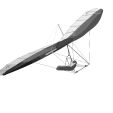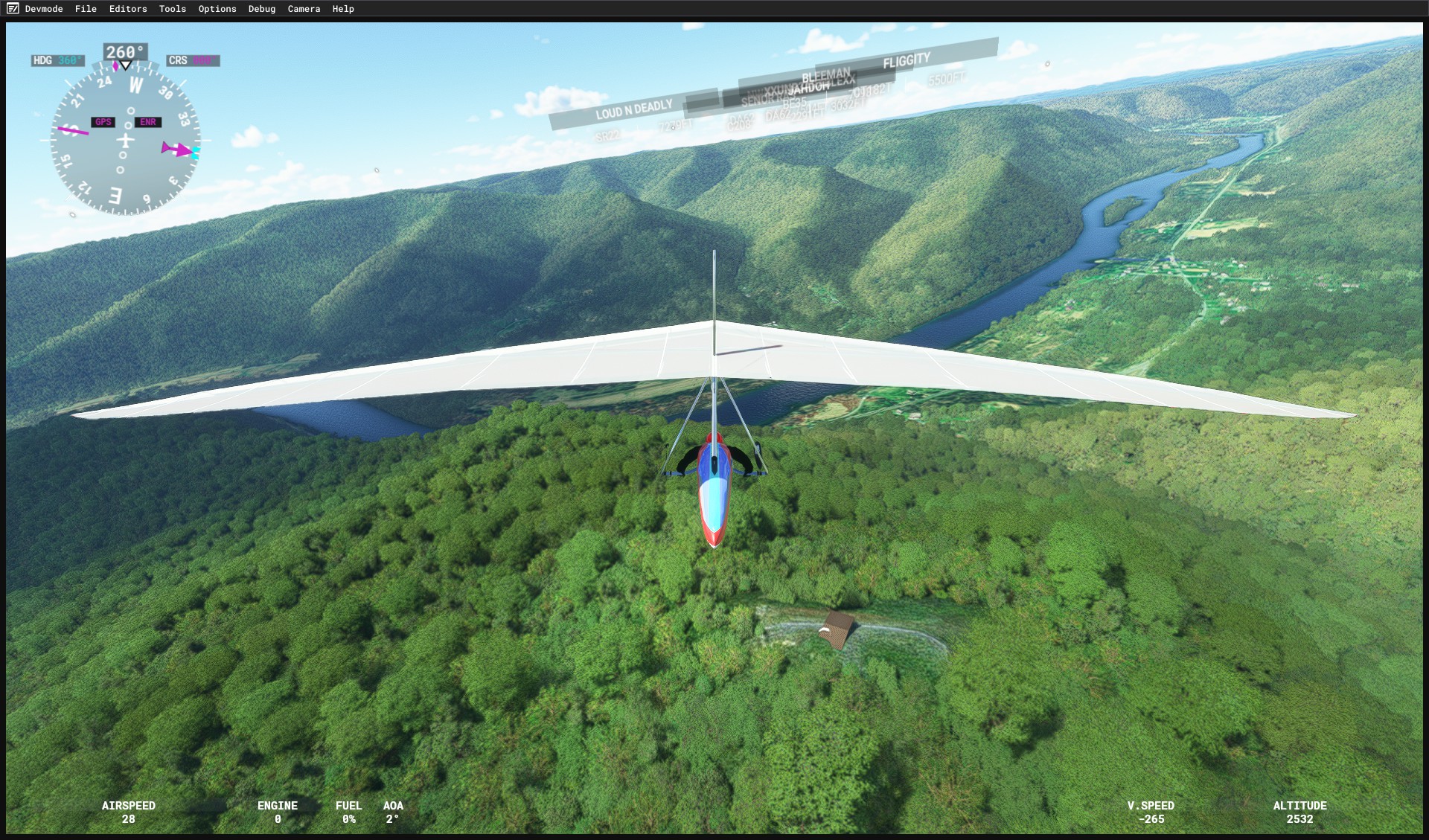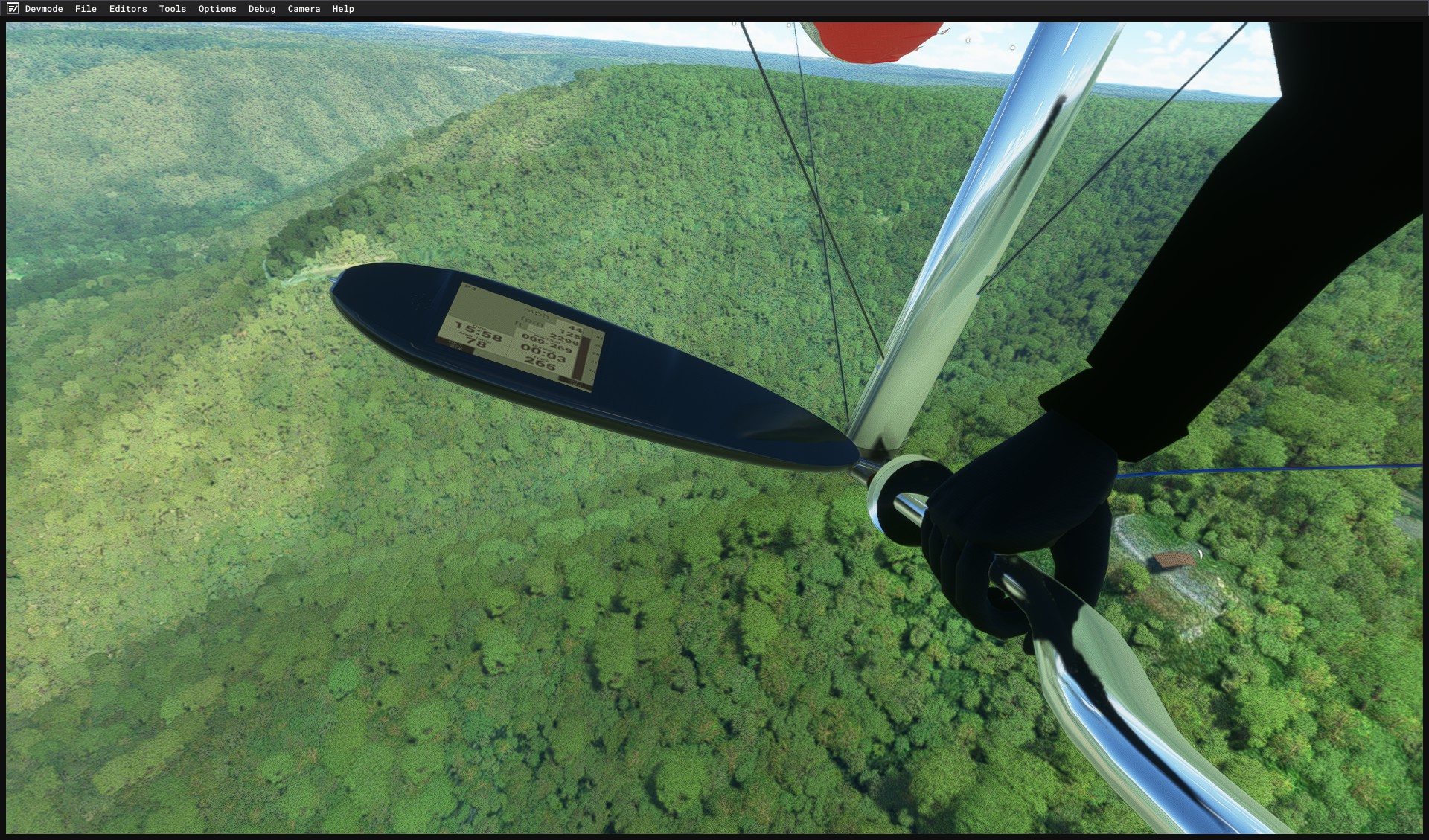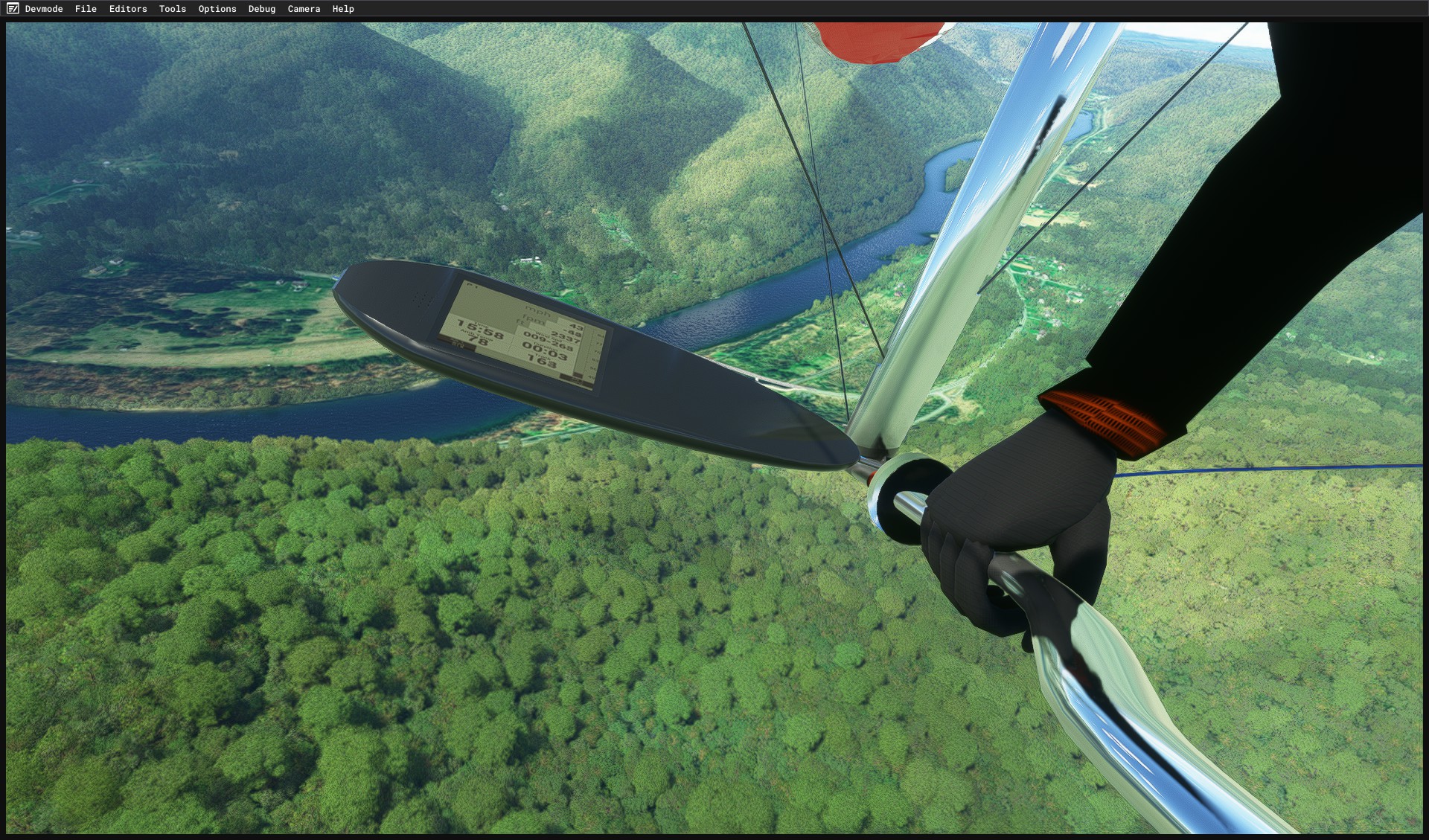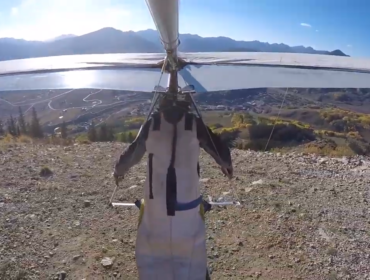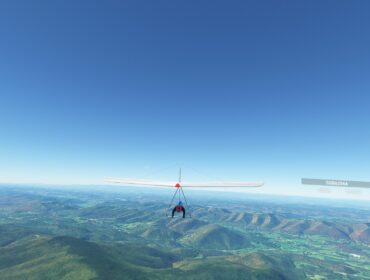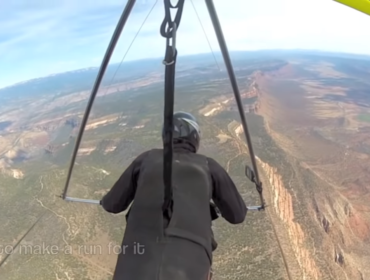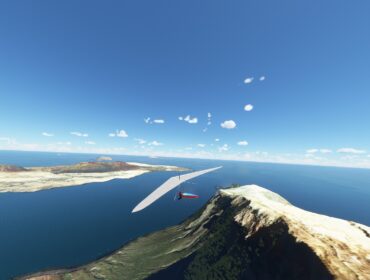North America – USA – California
Site Information
Big Bear is a popular hang gliding site near Big Bear Lake, CA. It offers scenic views of the lake and the surrounding mountains, as well as consistent thermal and ridge lift conditions. The site is suitable for intermediate to advanced pilots who can handle high altitude launches and landings, as well as variable weather conditions.
Launch Sites
There are two main launch sites at Big Bear: the North Launch and the South Launch. Both are located on the north side of the lake, on a ridge that runs parallel to Highway 18.
North Launch
The North Launch is the primary launch site at Big Bear. It faces northwest and has an elevation of about 8,200 feet (2,500 meters). The launch area is a large dirt clearing with a wooden ramp and a wind sock. The launch is suitable for hang gliders and paragliders, but paragliders should be careful of rotor turbulence from the trees behind the ramp.
South Launch
The South Launch is an alternative launch site at Big Bear. It faces southwest and has an elevation of about 8,000 feet (2,440 meters). The launch area is a small dirt clearing with a wind sock. The launch is suitable for hang gliders and paragliders, but it is more challenging than the North Launch due to the smaller size and steeper slope.
Landing Areas
There are two main landing areas at Big Bear: the LZ1 and the LZ2. Both are located on the south side of the lake, near the town of Fawnskin.
LZ1
The LZ1 is the primary landing area at Big Bear. It is a large grassy field with a wind sock and a radio antenna. The LZ1 is suitable for hang gliders and paragliders, but it can be crowded with spectators and vehicles on weekends and holidays. The LZ1 has an elevation of about 6,800 feet (2,070 meters) and is about 3 miles (4.8 kilometers) from the launch sites.
LZ2
The LZ2 is an alternative landing area at Big Bear. It is a smaller grassy field with a wind sock and a picnic table. The LZ2 is suitable for hang gliders and paragliders, but it can be tricky to land due to power lines, trees, and fences around the field. The LZ2 has an elevation of about 6,700 feet (2,040 meters) and is about 4 miles (6.4 kilometers) from the launch sites.
Flying Conditions and Restrictions
Big Bear is a year-round flying site, but the best conditions are usually from spring to fall, when the thermals are strong and the winds are favorable. The site can also be flown in winter, but the launches and landings can be covered with snow and ice, and the air can be very cold and turbulent. The site is not recommended for beginners or low-airtime pilots, as the conditions can be challenging and unpredictable.
Flying Conditions
The typical flying conditions at Big Bear are thermal and ridge lift, with the possibility of wave lift in strong winds. The thermals are usually strongest from late morning to early afternoon, and can reach up to 12,000 feet (3,660 meters) or more. The ridge lift is generated by the northwest or southwest winds blowing over the ridge where the launch sites are located. The wave lift is caused by the winds blowing over the mountains behind the ridge, creating standing waves that can extend up to 18,000 feet (5,490 meters) or more.
The flying conditions at Big Bear can vary depending on the season, the weather, and the time of day. Some factors that can affect the conditions are:
- The temperature difference between the lake and the land, which can create a lake breeze that can interfere with the ridge lift or create rotor turbulence near the shore.
- The inversion layer, which can trap the thermals below a certain altitude and prevent them from rising higher.
- The cloud cover, which can reduce the solar heating and weaken the thermals, or create overdevelopment and thunderstorms that can be dangerous for flying.
- The wind direction and speed, which can determine which launch site is suitable and how strong the ridge lift is. The ideal wind direction is between 270° and 330° for the North Launch, and between 210° and 270° for the South Launch. The ideal wind speed is between 5 and 15 mph (8 and 24 km/h) for both launch sites.
Flying Restrictions
The flying restrictions at Big Bear are mainly related to the airspace regulations, the landowner agreements, and the safety rules. Some of the flying restrictions are:
- Pilots must have a USHPA rating of H3/P3 or higher, or be under direct supervision of an instructor with a USHPA rating of H4/P4 or higher.
- Pilots must have a SHGA membership or a guest pass to fly at Big Bear. Guest passes are available for $10 per day or $25 per month. Pilots must also sign a waiver and follow the SHGA site protocols.
- Pilots must have a radio tuned to 151.505 MHz to communicate with other pilots and ground crew. Pilots must also have a cell phone with emergency contacts programmed in case of an accident or incident.
- Pilots must respect the landowner agreements and the site etiquette at Big Bear. Pilots must not litter, smoke, drink, or camp at the launch or landing areas. Pilots must also avoid flying over or landing on private property, wildlife areas, or sensitive habitats. Pilots must also be courteous and friendly to other pilots, spectators, and locals.
Best Times to Fly and Visit
Big Bear is a year-round flying site, but the best times to fly and visit depend on your preferences and goals. Some factors to consider are:
- The season: Spring and fall are usually the best seasons for flying at Big Bear, as the thermals are strong and the winds are favorable. Summer can also be good, but it can be very hot and dry, and the risk of thunderstorms and wildfires increases. Winter can also be flown, but it can be very cold and snowy, and the launches and landings can be icy or inaccessible.
- The weather: The weather at Big Bear can vary greatly depending on the altitude, the time of day, and the local conditions. It is important to check the weather forecast before flying, and to monitor the changes throughout the day. Some useful sources of weather information are:
- The SHGA website, which provides a daily weather briefing, a live weather station, and a webcam for Big Bear: https://www.shga.com/bigbear.php
- The Windy app, which provides a detailed wind map, a meteogram, and a sounding for Big Bear: https://www.windy.com/34.263/-116.909?34.263,-116.909,11
- The Soaring Predictor app, which provides a soaring forecast, a thermal map, and a cross-country planner for Big Bear: https://soaringpredictor.info/bigbear
- The crowd: Big Bear is a popular flying site, especially on weekends and holidays, when it can attract many pilots, spectators, and tourists. If you prefer a quieter and less crowded experience, you may want to visit on weekdays or off-seasons. However, you should always fly with at least one other pilot or ground crew for safety reasons.
More Information
If you want to learn more about hang gliding at Big Bear, or about hang gliding in general, here are some useful sources of information:
- The SHGA website, which provides information about the club, the site, the membership, the events, the weather, and the contacts: https://www.shga.com/
- The USHPA website, which provides information about the sport, the ratings, the regulations, the insurance, the magazines, and the associations: https://www.ushpa.org/
